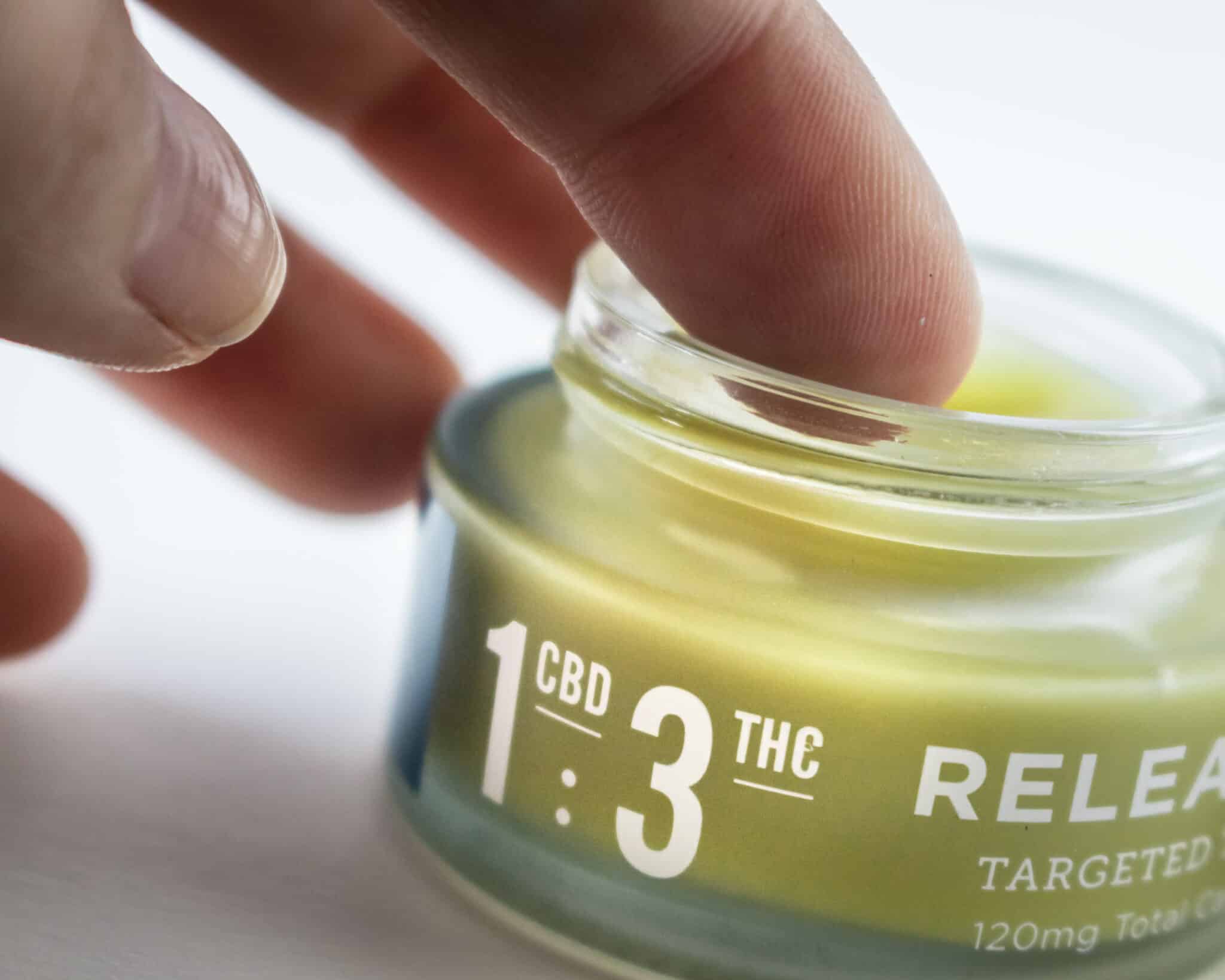Both CBD and THC are cannabinoids found in cannabis plants, but they interact differently with the body’s endocannabinoid system and thus offer different experiences and benefits. Understanding these ratios can help users tailor their cannabis use to their specific needs or desired outcomes.
In Florida medical dispensaries, certified individuals with qualifying conditions for a medical marijuana card are able to choose between many different CBD and THC ratios with the help of a specialist.
CBD and THC: What’s the Difference?
CBD (Cannabidiol) and THC (Tetrahydrocannabinol) are both cannabinoids found in cannabis plants, but they have distinct properties and effects on the human body:
Psychoactive Effects
THC is best known for its psychoactive effects, meaning it can make users feel “high.” It interacts with the brain’s cannabinoid receptors, leading to changes in perception, mood, consciousness, and behavior.
CBD, on the other hand, does not cause a high. It’s considered non-psychoactive and may counteract some of THC’s psychoactive effects. CBD is thought to influence other receptors in the body, including those involved in serotonin modulation.
Medical Benefits
Both cannabinoids offer therapeutic benefits, but they are sought after for different reasons:
THC is often used for its pain-relieving properties, appetite stimulation, and its ability to reduce nausea. It’s also been found useful in the treatment of conditions like glaucoma and muscle spasticity.
CBD is popular for its potential to treat a wide range of conditions without causing intoxication. It’s studied for its effectiveness against anxiety, depression, inflammation, pain, seizures (particularly in conditions like epilepsy), and more.
What is a CBD:THC Ratio?
CBD (Cannabidiol) and THC (Tetrahydrocannabinol) ratios in cannabis products are crucial for determining the effects they may have on the user. Both CBD and THC are cannabinoids found in cannabis plants, but they interact differently with the body’s endocannabinoid system and thus offer different experiences and benefits. Understanding these ratios can help users tailor their cannabis use to their specific needs or desired outcomes. Here’s a closer look:
High THC:CBD Ratios
An example of a high THC:CBD ratio would be a cannabis product with a ratio of 10:1 or higher. Products with high THC to CBD ratios are primarily psychoactive and are likely to produce the euphoric high associated with marijuana. For new users, it’s essential to start slow to avoid “greening out.” High THC strains may be used for pain relief, to reduce nausea, and to stimulate appetite but also have a higher chance of inducing anxiety or paranoia in some users.
Balanced THC:CBD Ratios
An example of a balanced THC:CBD ratio would be a cannabis product with a ratio of 1:1. A balanced ratio offers a moderate level of psychoactivity, provided by THC, along with the calming effects of CBD. This combination can be effective for managing pain, inflammation, and anxiety while minimizing the intensity of the high, making it a good option for those seeking therapeutic benefits with fewer psychoactive effects.
High CBD:THC Ratios
An example of a high CBD:THC ratio would be a cannabis product with a ratio of 20:1 or higher. These ratios indicate a product is high in CBD and low in THC. Such products are largely non-psychoactive and are sought after for their potential to alleviate symptoms like inflammation, pain, seizures, and anxiety without causing a significant high. This makes them suitable for users looking for the therapeutic aspects of cannabis without the strong psychoactive effects.
Selecting the right CBD:THC ratio depends on individual tolerance, experience with cannabis products, and the specific symptoms or effects one is aiming to address. Products with different ratios can be found in various forms, including oils, tinctures, edibles, and vaporizers, allowing users to choose the most suitable method of consumption.
Best CBD:THC Ratio for Pain
The best CBD:THC ratio for pain management can vary significantly from person to person, depending on several factors including the type of pain being treated (e.g., inflammatory vs. neuropathic), individual tolerance levels, and personal preferences regarding the psychoactive effects of THC.
The most commonly used CBD:THC ratio for pain management, especially among those who prefer a balanced approach to the psychoactive and therapeutic effects, is the 1:1 ratio of CBD to THC. This balanced ratio is often cited for its effectiveness in providing significant pain relief while minimizing the intense psychoactive effects that can come with higher levels of THC.
The 1:1 ratio allows users to take advantage of the entourage effect, where the combined action of CBD and THC working together is more effective than either compound working alone. This synergy can lead to better management of pain, including chronic pain and neuropathic pain, along with reduced inflammation and anxiety that might accompany long-term pain conditions.
However, the best ratio can still vary based on individual needs, types of pain, and tolerance to THC. Some may find relief with higher CBD ratios such as 20:1 or 2:1, which offer pain management with less psychoactivity, making these ratios better suited for daytime use or for those sensitive to the effects of THC.
Best CBD:THC Ratio for Neuropathy
For managing neuropathic pain, a common and often recommended CBD:THC ratio is again the 1:1 ratio. This balanced mix of CBD and THC leverages the benefits of both cannabinoids, which can be particularly effective for neuropathic pain—a type of pain caused by damage or disease affecting the somatosensory nervous system.
The 1:1 ratio is popular because it can provide significant pain relief while minimizing high psychoactive effects. THC contributes its analgesic properties and helps in reducing pain signals in the brain, while CBD can help reduce inflammation, anxiety, and may enhance THC’s pain-relieving effects without increasing its psychoactivity. This synergy is sometimes referred to as the “entourage effect,” where the combined effect of different cannabis compounds is greater than the sum of their parts.
Patients with neuropathy may benefit from the anti-inflammatory, analgesic, and neuroprotective properties offered by this balanced ratio, potentially finding relief from symptoms like pain, numbness, tingling, and weakness. However, individual experiences can vary, and some might prefer ratios with higher CBD content (e.g., 2:1 or 3:1) for daytime use to avoid THC’s psychoactive effects, or conversely, higher THC ratios (e.g., 1:2) for more pronounced pain relief, depending on their symptom severity, tolerance, and lifestyle.
Best CBD THC:Ratio for Anxiety
For managing anxiety with marijuana, many users and practitioners recommend starting with a higher CBD to THC ratio, such as 20:1, 10:1, or at least 4:1. CBD is lauded for its calming and anti-anxiety effects without inducing a psychoactive high, making it a preferred option for those looking to manage anxiety or stress without the intoxicating effects associated with THC.
Best CBD:THC Ratio for Relaxation
For relaxation, many users find that a balanced CBD:THC ratio or a slightly higher CBD ratio works best, such as 2:1 CBD to THC or 1:1. These low THC strains provide a harmonious blend of the calming, anti-anxiety effects of CBD with the mild psychoactive and muscle-relaxing properties of THC. The goal is to achieve a state of relaxation without significant intoxication or impairment, which can be ideal for unwinding in the evening or managing stress without overwhelming psychoactive effects.
Our Advice
It’s crucial to note that individual responses to CBD and THC can vary dramatically, what works for one person may not work for another. Starting with a low dose and slowly increasing it allows you to monitor how your body reacts to the combination of CBD and THC. If you have any questions feel free to give us a call to talk to a medical marijuana specialist.



